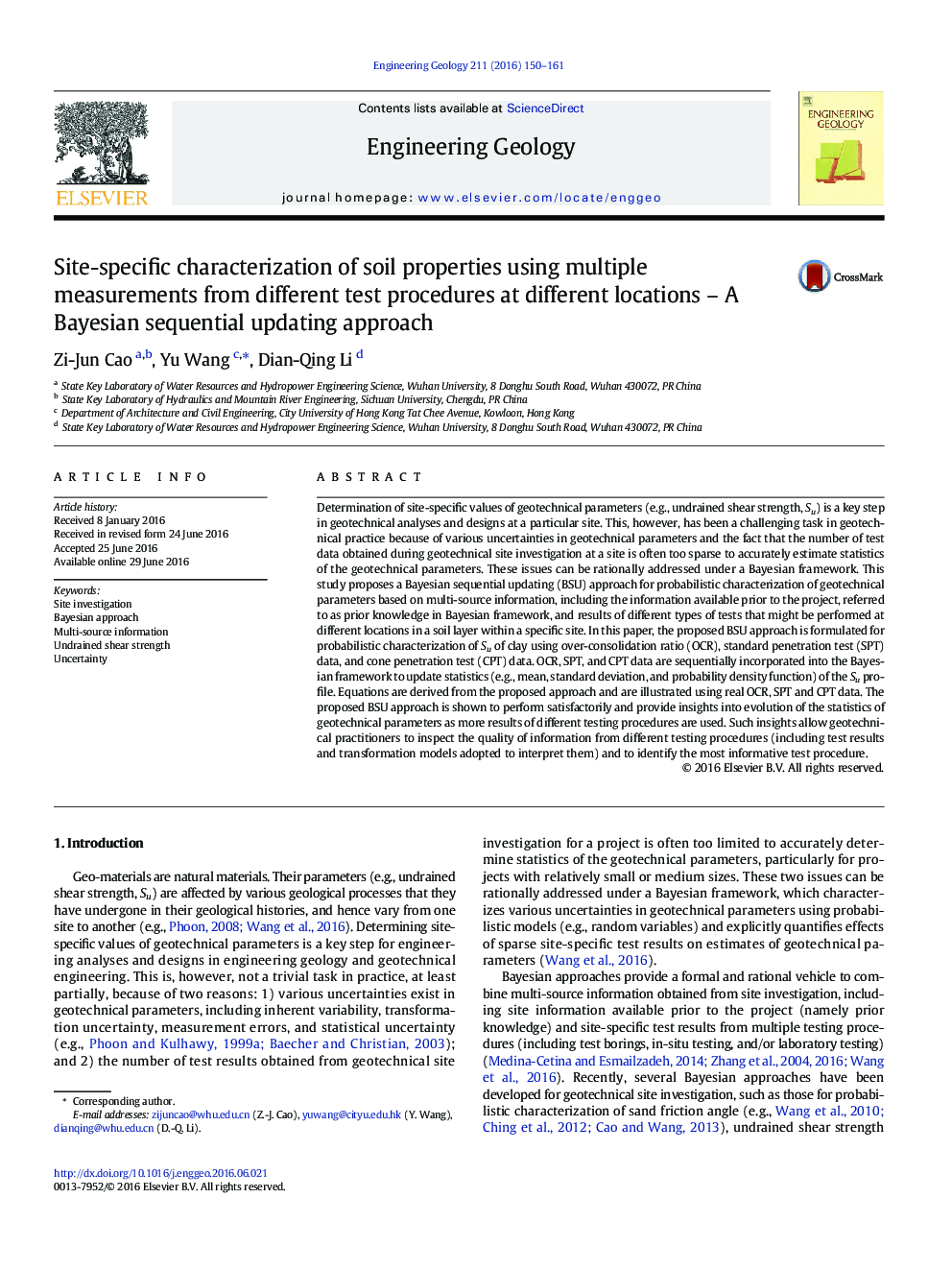| Article ID | Journal | Published Year | Pages | File Type |
|---|---|---|---|---|
| 4743098 | Engineering Geology | 2016 | 12 Pages |
•A Bayesian sequential updating approach is developed for geomaterial property characterization.•The approach can handle multiple data from different test procedures at different locations.•The approach enables quality inspection of information from different testing procedures.•Implementation procedures are illustrated through examples.
Determination of site-specific values of geotechnical parameters (e.g., undrained shear strength, Su) is a key step in geotechnical analyses and designs at a particular site. This, however, has been a challenging task in geotechnical practice because of various uncertainties in geotechnical parameters and the fact that the number of test data obtained during geotechnical site investigation at a site is often too sparse to accurately estimate statistics of the geotechnical parameters. These issues can be rationally addressed under a Bayesian framework. This study proposes a Bayesian sequential updating (BSU) approach for probabilistic characterization of geotechnical parameters based on multi-source information, including the information available prior to the project, referred to as prior knowledge in Bayesian framework, and results of different types of tests that might be performed at different locations in a soil layer within a specific site. In this paper, the proposed BSU approach is formulated for probabilistic characterization of Su of clay using over-consolidation ratio (OCR), standard penetration test (SPT) data, and cone penetration test (CPT) data. OCR, SPT, and CPT data are sequentially incorporated into the Bayesian framework to update statistics (e.g., mean, standard deviation, and probability density function) of the Su profile. Equations are derived from the proposed approach and are illustrated using real OCR, SPT and CPT data. The proposed BSU approach is shown to perform satisfactorily and provide insights into evolution of the statistics of geotechnical parameters as more results of different testing procedures are used. Such insights allow geotechnical practitioners to inspect the quality of information from different testing procedures (including test results and transformation models adopted to interpret them) and to identify the most informative test procedure.
